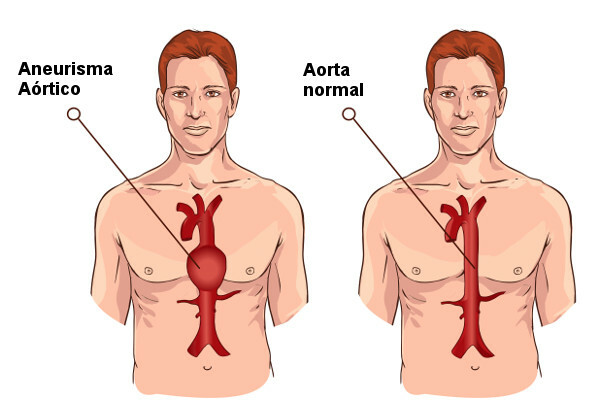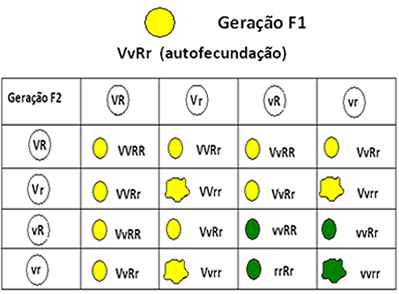THE aorta it is without doubt the best known of the arteries. This is not for less, since it is about the largest and main artery in our body. The aorta starts from the heart and branches into several others, thus ensuring the supply of blood for the whole body. Next, we will learn a little more about the aorta and also some common problems that affect it.
Read more:Cardiovascular system - responsible for the circulation of blood in our body
Aorta artery
the aorta is the biggest artery found in our body. It originates in the left ventricle, one of the cavities of the heart, and from there it branches into several other arteries. In its region of origin, the aorta is about 2.8 cm in diameter, which gradually decreases as its branches emerge. We can divide the artery into three servings: ascending aorta, aortic arch and descending aorta. (We will further describe each of these parts in the next topic.)
The aorta is classified as a large elastic artery due to its diameter and also the presence of elastic fibers in its walls. Like other arteries, the aorta also has a
three-layer wall: tunica intima, tunica media and tunica adventitia.- Underwear: is the innermost layer of the artery, which is formed by a layer of endothelial cells that are supported by a layer of connective tissue loose. It is this layer of the artery that is in direct contact with the blood.
- Middle tunic: it is the median layer of the artery, consisting basically of muscle cells and elastic tissue. In the arteries, the tunica media is well developed.
- Adventitious tunic: it is the outermost part of the artery wall, being basically formed by elastic fibers and collagen.
portions of the aorta

As stated, the aorta can be divided into three portions: ascending, aortic arch and descending. See the characteristics of each of them:
ascending aorta
- Part of the aorta that has its path passing superiorly to the heart;
- It is about 5 cm long;
- It branches into the right coronary artery and the left coronary artery, responsible for the irrigation of the cardiac muscle.
aortic arch
- It is located after the ascending portion of the aorta, being the second segment of the aorta.
- Features an arching.
- Its diameter is from 25 mm to 30 mm.
- It branches into the brachiocephalic trunk artery, the left common carotid artery and the left subclavian artery. The brachiocephalic trunk branches into the right subclavian artery and the right common carotid artery.
descending aorta
- It extends through the chest and abdomen. When compared to the other portions, it stands out for being the longest.
- The portion that passes through the chest is called the thoracic aorta and has a series of branches that ensure that blood is made available to the structures that are between the aortic arch and the diaphragm.
- The portion that extends from the diaphragm to the region where it branches into two common iliac arteries is called the abdominal aorta. It also branches out and guarantees the irrigation of structures located in this region.
Do not stop now... There's more after the advertising ;)
Main problems affecting the aorta
The aorta is the main artery in our body, therefore, problems related to this blood vessel deserve attention because, often, can be fatal. Symptoms can be confused with other health problems, and commonly these illnesses are silent.
As symptoms of aortic problems we can mention the chest and back pain. We will describe below, three of the main problems that can affect her.
aortic aneurysm

Aortic aneurysm can be defined as a abnormal artery dilation which exceeds the physiological diameter of the vessel by 50%. The aneurysm can arise due to a defect or even weakness of the artery wall.
Among the risk factors for the development of this problem, we can mention smoking, family history and hypertension. The aneurysm usually affects the abdominal aorta more than the thoracic aorta. The main problem of aortic aneurysms is their rupture., event that can be lethal.
Most of the time, the aortic aneurysm is asymptomatic, detected by chance when performing imaging exams. Symptoms, when they appear, are related to the affected portion of the aorta.
At the abdominal aneurysm, most common type, the person may experience an abdominal throbbing sensation and abdominal pain. When the aneurysm ruptures, it can cause vomiting, nausea, increased heart rate and pressure drop.
See too: 10 leading causes of death in the world
atherosclerosis
It is one of the most well-known problems when it comes to cardiovascular disease. Atherosclerosis is a process that begins with a lesion in the innermost layer of the artery that leads to a chronic inflammatory process.
This inflammatory process results in formation of ahe scores by various elements such as fat and calcium. This sign leads to the narrowing and stiffening of the artery, causing a reduction in blood flow and impairment of blood supply to the region irrigated by the artery.
Atherosclerosis presents as risk factors the high levels of cholesterol, high blood pressure, smoking, diabetes, overweight and obesity, and sedentary lifestyle. Want to know more about this topic? Read our text: atherosclerosis.
See more: The importance of physical exercise
aortic dissection

Although this health problem is not widely known by the population, aortic dissection it is the most deadly pathology among acute aortic syndromes with sudden onset of chest pain. This is because, even though it is an infrequent condition, it has high mortality when not treated quickly.
This problem is characterized by the disruption of the inner wall of the blood vessel, which leads to the formation of a false (light) channel in the artery. The blood then enters this false light, which can compress the true light and thereby compromise the blood supply to various parts of the body.
Hypertension and diseases that affect connective tissue are among the main causes of dissection.
See too:Difference between high blood pressure and low blood pressure
ATTENTION: Early discovery of cardiovascular problems is essential for the greatest success in treatment. When you notice symptoms such as chest pain, shortness of breath and dizziness, be sure to seek medical attention. In addition, periodic exams are essential, as many of these diseases are silent. Always remember that early diagnosis is the key to curing many diseases! |
By Vanessa Sardinha dos Santos
Biology teacher

